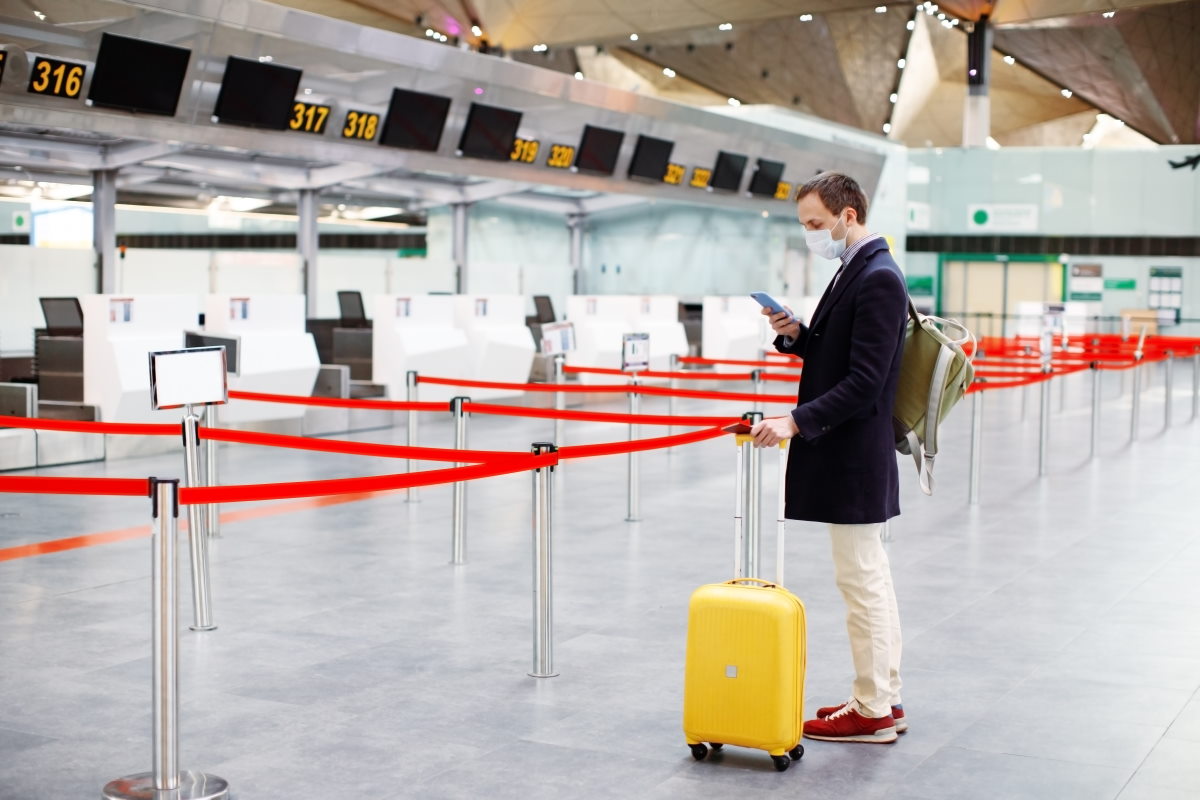
Looking at the glass half full: The increase in Digital Transformation within airports during COVID-19
Digital Transformation is not new in any industry and in particular aviation.
Digital Transformation programmes are often a strategy to increase efficiency at airports, providing a seamless passenger journey by using automation. ePassports for example have been around for over 20 years utilising iris technology to aid with security and immigration purposes.
Whilst COVID-19 has had a devastating impact on the aviation industry, one positive is that touchless, automated, and digital journeys are here to stay, and airports have even accelerated these rollouts during the pandemic. Results from ACI and SITA’s 2020 Airport IT Trends Survey confirmed a commitment to investments in these areas as well as new technologies to enhance operational and business results.
Technology being accelerated – Self Service
Touchless, self service technology is being rolled out rapidly.
Check-In via mobile applications and kiosks is not new, and 89% of airports will have this fully implemented by 2023. Whilst this is not necessarily the latest innovation in the market, many of the suppliers of these kiosks have been busy developing new interfaces which track passengers’ fingers hovering over the buttons on the kiosks in order to avoid touching the surface to check-in. This is a key component of safety during the pandemic, as-well as being more efficient than having to disinfect screens after each use.
Biometrics
Biometrics is also being widely adopted within the industry to make journeys more secure, as-well as avoiding human contact as much as feasible. Digital Identity programmes from the World Economic Forum, (WEF) World Travel and Tourism Council (WTTC) and the International Air Transport Association (IATA) all made great strides before the pandemic. Biometric checks can be purely for immigration and emigration purposes, utilising e gates for efficiency purposes, however with the addition of digital health credentials such as proof of vaccines or negative tests, integrating this into the passenger’s single digital identity is now crucial. This has become challenging with differing requirements from States and without a uniform cohesive approach to re-start travel. The use of creating a biometric token at check-in which can be used across all airports process points including security and boarding has a key advantage in speed, security, and safety.
Security screening
Security checkpoints have presented a difficult challenge for airports during COVID-19. The need to physically distance passengers has shown that the capacity of security checkpoints could reduce by up to 70%. Physical pat downs and bag searches, albeit a necessity to eliminate threats, has created safety concerns due to close proximity of passengers and physical touching of belongings. To reduce bottlenecks in the security process, airports are implementing a number of initiatives such as virtual queuing solutions which provides a timeslot for passengers going through security and eases the congestion of everyone turning up at the same time. Other digital initiatives that are being accelerated include the introduction of Computed Tomography screening machines with advanced algorithms that can allow travellers to keep liquids and large electricals within their bag for screening, reducing the need for physical contact and dropping the chances of having to undergo a bag search. Finally, the use of Terahertz scanners are being trialled and put through the certification process which will eliminate the need for physical pat downs for prohibited items on a passenger’s body.
Retail
Airports are currently looking at ways to increase revenues through other digital channels reminiscent of the new era. Airports such as Hong Kong International airport have launched their own apps for retail, mobile ordering and touchless payments ensuring even more contactless travel. These initiatives such as having food ready for pickup or dropped off at your gate are a bi-product of COVID-19, but also an attractive business plan based of customer convenience that we still see continue to be extended after the crisis is subdued.
ACI World anticipates a recovery to 2019 pre-pandemic traffic levels between 2023 and 2024 showing that travel will still be hampered for years to come. This time allows airports to plan and implement their new digital transformation strategies focusing on the passenger experience, improving operational efficiencies as-well as creating the safest journey possible. The pace of innovation in the market along with changing expectations of passengers paves the way for airports to embed digital transformation within their organizations.
Written by Billy Shallow.
Billy Shallow is Director of Innovation and Technology at Airports Council International (ACI) based in Montreal, Canada.
In his role, Billy leads ACI World’s Innovation and Technology teams encompassing the World Airport IT Standing Committee as-well as the Smart security programme focused on improving security, operational efficiency and the passenger experience across the world’s airports.
Before ACI, Billy worked at London City Airport for five years designing and implementing their security transformation programme. Billy then went on to lead consulting projects for 18 months working at King Abdulaziz International Airport Jeddah, Brussels Airport, Birmingham Airport and Belfast City on security and optimization programmes.
A British national, with a passion for operational improvement, Billy is a lean six sigma black belt. He sits on ICAO’s working group on innovation, as-well as a number of industry groups. He holds a University of London Bachelor’s degree in Management and Organizational Analysis.








